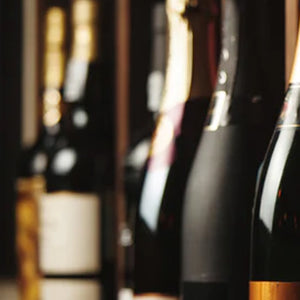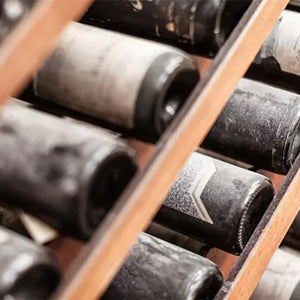
Everything You Need to Know About Burgundy
Collectors, industry folk, and novice consumers alike can generally agree on one thing – when it comes to the world’s best wines, Burgundy is the cream of the crop. Home to a rich viticultural history, outstanding producers, and some of the most fetishized growing sites in the word, it’s no surprise that these bottles continue to garner some of the highest praises (and prices) in the industry – though worry not, there are still great deals to be found. However, navigating the complex world of Burgundian wine can be difficult. We’re breaking down everything you need to know about this prestigious region here.
Quick Facts:
- 5 main subregions / 84 AOCs (Appellation d’Origine Contrôlée)
- Approximately 30,000 hectares of vines
- 33 Grand Crus (less than 5% of wine) / 585+ Premier Crus
- Benchmark region for Chardonnay and Pinot Noir worldwide
A Bit of Regional History
Viticulture in Burgundy dates back to as early as the second century AD, though many believe that the Celts were producing wine within the regino 250 years prior. Both monks and monasteries from the Catholic Church played a huge role in the region’s history, particularly the Benedictines and the Cisterians (it was ultimately the latter who created the famed wall around Clos de Vougeot back in 1336). This attention to plot differentiation is the first recorded evidence of the foundation of Burgundy’s famed cru system.
Despite its rich history, wines from Burgundy didn’t truly become famous until the 14th century, when the papacy moved to France (Avignon) from Rome. It was during this time that wines from Beaune were deemed the most prestigious in France. Burgundy’s prestige continued to rise during the following two centuries, and although Pinot Noir’s first mention dates back to 1370, other grapes—which are not permitted in the region today—were likely used.
By the 18th century, the first négociant houses were established in Burgundy, meaning that local growers sold their fruit to larger companies to produce wine. Most of the wines from Burgundy were sold to Paris, with Champagne being the region’s biggest competition. Post-French Revolution, many of Burgundy’s larger vineyards were portioned up and sold, which is a big reason why many producers have small amounts of vineyard rows scattered around different areas in the overarching region. This also created a push towards smaller, family-owned wineries.
Burgundy in the 20th Century
After the devastations of the depression and two World Wars, Burgundy’s vines were in pretty bad shape. Many producers sprayed potassium and chemical fertilizers on the land to encourage growth, though by the 1980s, a pivot towards reducing chemicals and lessening yields occurred. Wines from the past three to four decades have benefitted from this shift, and today, some of the region’s best (and most coveted) bottles hail from this time period. Now 20 years into the new millennium, Burgundy is continuing to evolve at a rapid pace, with responsible farming and meticulous winemaking at the forefront of most producers’ agendas.
Where Is Burgundy?
Burgundy is located in eastern central France. It is part of the overarching administrative region of Bourgogne-Franche-Comté and is regarded as one of the most prestigious wine regions in the world.
What Are the Main Regions in Burgundy?
Burgundy is broken down into five main regions: Chablis, Côte de Nuits, Côte de Beaune, Côte Chalonnaise, and Mâconnais. The Côte de Nuits and Côte de Beaune are often referred to as the Côte d’Or, which translates to the Golden Slope.
What Kind of Wine is Made in Burgundy?
The vast majority of wine made in Burgundy is still, dry, and either white or red. White Burgundy is generally produced from Chardonnay, whereas Red Burgundy is made from Pinot Noir. Small amounts of Aligoté and Gamay are also planted in the region, though on a much smaller scale.
Sparkling wine is also made in Burgundy and is known as Crémant de Bourgogne. A miniscule amount of rosé is made, and its production is centered around the Marsannay appellation.
How Are Burgundian Wines Classified?
Burgundy wines are classified by region, appellation and designation. Within the five sub-regions listed above, there are 84 protected appellations in Burgundy, which is higher than any other wine-producing region in France. Further classification is broken down by where exactly the vines are planted.
Breakdown of Burgundian Wine Classification:
Regional - (example: AOC Bourgogne)
Village - (example: Vosne-Romanée)
Premier Cru - (example: Vosne-Romanée 1er Cru ‘Les Malconsorts’)
Grand Cru - (example: La Tâche Grand Cru, located within the village of Vosne-Romanée)
Why Is Burgundy So Special?
In addition to its rich history, Burgundy is often credited as being the birthplace of terroir, a foundational concept in the world of wine. Terroir is a term used to describe the environment in which a wine is made. Factors that play into a given place’s terroir are its climate, topography, soil types, and more. While every region of course has its own distinct terroir, Burgundy is credited with being the first region to actually respect—and therefore, farm according to—the unique differences between various vineyard sites, even down to the nuances of different rows within a single vineyard.
Who Are Some of the Top Producers in Burgundy?
Burgundy is home to countless talented producers. Here is a short list of some of its benchmark winemakers:
Chablis - Christian Moreau, Vincent Dauvissat
Côte de Nuits - Domaine de la Romanée-Conti, Domaine JF Mugnier, Domaine Lignier-Michelot
Côte de Beaune - Camille Giroud, Domaine des Comtes Lafon, Domaine Roulot
Côte Chalonnaise - Olivier Leflaive, Domaine Dureuil-Janthial
Mâconnais - Domaine de Villaine, Héritiers du Comte Lafon




